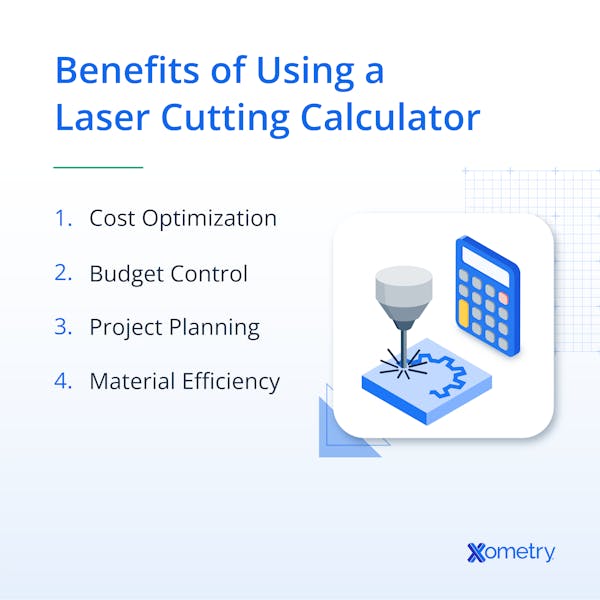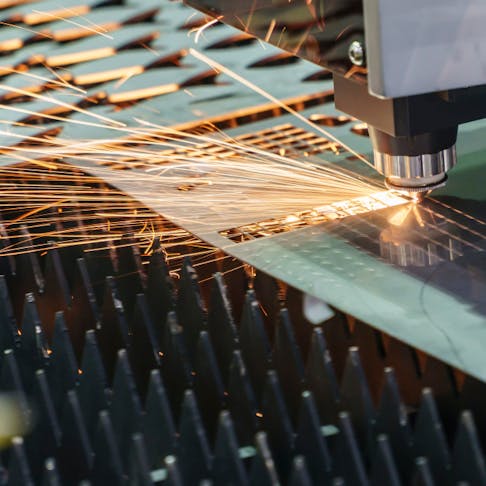Laser cutting is a great manufacturing technique for a variety of projects, but if you don’t plan thoroughly, it’s easy to go way over budget. In order to plan, you’ll need to know exactly what costs are involved in the process. This is where a good laser cutting cost calculator comes in. Let’s learn more about it and how it can help you save time and money.
What is a Laser Cutting Cost Calculator?
Laser cutting cost calculators are specialized tools that help manufacturers accurately estimate all the costs associated with their laser cutting projects. When you input all the relevant details into the calculator—i.e., the material, design, cutting speed, etc.—it will use its advanced technology and algorithms to provide you with a precise breakdown of expected costs.
Laser Cutting Calculator
Why Use One
The main benefit of using one of these calculators is the cost-saving potential. The information they provide you with isn’t just useful for your company’s finance department; you’ll have insights into each different part of the process and be able to make changes accordingly to tweak the cost to stay within your budget. Whether it’s using a different material, optimizing the design, or adjusting the cutting speed, a cost calculator can give you a lot more control.

Laser Cutting Costs
There are a few main factors that can affect the overall cost of a laser cutting project. These are:
Material: While many materials are compatible with laser cutting, some are a lot more expensive than others. If your part doesn’t particularly need to be extra durable—hardier materials are most often pricier—choosing a less durable (read: costly) alternative might be feasible. It’s also worth thinking about the material’s thickness and its availability, as both can raise costs.
Design: The complexity of your design also plays a part in how much you’ll end up paying. Parts with intricate features, tight tolerances, and complex geometries take more time and effort to make, which ultimately raises the cost.
Speed: Faster cutting speeds might increase productivity but will likely require more power (and more money). Slower cutting speeds can be more precise but may lead to longer production times.
Power: A laser machine with higher power can handle thicker materials or more intricate cuts more efficiently, but it may come at a higher cost.
Quantity: This one’s self-explanatory: the more items you need, the more it will cost. However, the more you make, the lower the cost per part.
FAQs on Laser Cutting Costs
How can I bring costs down on my laser cutting projects?
There are a few things you can do. If your design doesn’t need to be overly complex—meaning it won’t affect functionality—you might consider simplifying it. Finding the right balance between cutting speed and machine power can also help you work efficiently without racking up unnecessary costs. Lastly, think about your batch sizes and, more specifically, the cost per part. Tweaking these factors can help you stay within budget while still getting great results.
What expensive materials can be replaced with cheaper alternatives?
This depends on what you're making, but there are a few common material swaps that can help cut costs. For example, if you're using acrylic for strength and clarity, PETG is a solid—and often cheaper—alternative. Stainless steel, being a more high-end material, can sometimes be replaced with mild steel or aluminum, especially if corrosion resistance isn’t a major factor. Similarly, if you’re after the look rather than the properties of brass or copper, anodized aluminum can be a much more budget-friendly option.
How Xometry Can Help
To get started on your laser cutting project, you’ll need to know all the associated costs. You can get started today by uploading your designs to the Xometry Instant Quoting Engine®!
Disclaimer
The content appearing on this webpage is for informational purposes only. Xometry makes no representation or warranty of any kind, be it expressed or implied, as to the accuracy, completeness, or validity of the information. Any performance parameters, geometric tolerances, specific design features, quality and types of materials, or processes should not be inferred to represent what will be delivered by third-party suppliers or manufacturers through Xometry’s network. Buyers seeking quotes for parts are responsible for defining the specific requirements for those parts. Please refer to our terms and conditions for more information.


